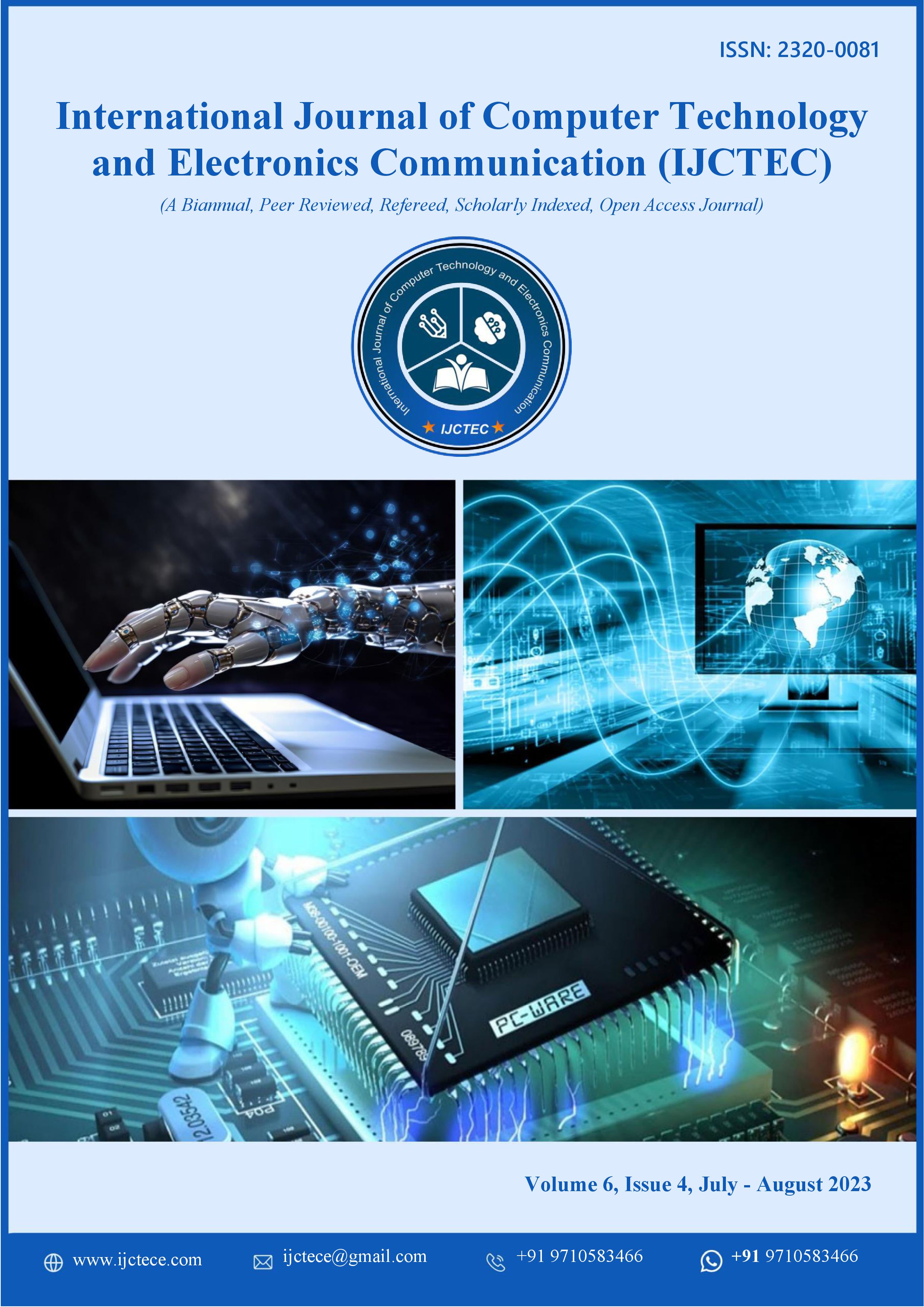AI-Driven Software Ecosystem Engineering for Pediatric BMS Modernization: Digital Forensics, Risk Mitigation, Cloud-Enabled NLP, Image Denoising, and Cyber Data Vault Redundancy
DOI:
https://doi.org/10.15680/IJCTECE.2023.0604005Keywords:
AI-Driven Software Ecosystem, Pediatric BMS Modernization, Cloud Computing, Natural Language Processing (NLP);, Image Denoising, Cyber Data Vaults, Digital Forensics, Risk Mitigation, Healthcare IT Security, Cloud-Enabled Healthcare SystemsAbstract
The modernization of pediatric healthcare infrastructures increasingly requires resilient, intelligent, and secure IT ecosystems. This paper presents an AI-driven software ecosystem for pediatric Building Management System (BMS) modernization, integrating cloud-enabled natural language processing (NLP), image denoising, and cyber data vault redundancy. By embedding digital forensics and risk mitigation strategies, the framework enhances data integrity, security, and compliance across healthcare operations. NLP automates and analyzes clinical documentation, facilitating rapid decision support, while image denoising improves diagnostic imaging quality. Cyber data vaults ensure redundant, encrypted storage, safeguarding sensitive patient and operational data. The incorporation of forensic analytics enables proactive detection of anomalies, security breaches, and operational risks. Experimental simulations demonstrate measurable improvements in system resilience, threat detection accuracy, and clinical workflow efficiency, establishing a blueprint for secure, AI-enabled pediatric healthcare modernization.
References
1. King, A., et al. (2022). A survey on clinical natural language processing in the United Kingdom: evolution, methodologies, applications and barriers. NPJ Digital Medicine, 5, Article 112. (Nature)
2. Batchu, K. C. (2022). Modern Data Warehousing in the Cloud: Evaluating Performance and Cost Trade-offs in Hybrid Architectures. International Journal of Advanced Research in Computer Science & Technology (IJARCST), 5(6), 7343-7349.
3. U.S. Department of Health & Human Services. (2020). 2020: A retrospective look at healthcare cybersecurity (white paper). HHS. (HHS.gov)
4. Azmi, S. K. (2021). Spin-Orbit Coupling in Hardware-Based Data Obfuscation for Tamper-Proof Cyber Data Vaults. Well Testing Journal, 30(1), 140-154.
5. Zhang, Y., et al. (2022). Remote patient monitoring and continuous pediatric monitoring: usability studies & pilot systems. JMIR Human Factors (2022). (Human Factors)
6. Dave, B. L. (2023). Enhancing Vendor Collaboration via an Online Automated Application Platform. International Journal of Humanities and Information Technology, 5(02), 44-52.
7. Gonepally, S., Amuda, K. K., Kumbum, P. K., Adari, V. K., & Chunduru, V. K. (2021). The evolution of software maintenance. Journal of Computer Science Applications and Information Technology, 6(1), 1–8. https://doi.org/10.15226/2474-9257/6/1/00150
8. Srinivas Chippagiri , Savan Kumar, Olivia R Liu Sheng,‖ Advanced Natural Language Processing (NLP) Techniques for Text-Data Based Sentiment Analysis on Social Media‖, Journal of Artificial Intelligence and Big Data(jaibd),1(1),11-20,2016.
9. Gonepally, S., Amuda, K. K., Kumbum, P. K., Adari, V. K., & Chunduru, V. K. (2022). Teaching software engineering by means of computer game development: Challenges and opportunities using the PROMETHEE method. SOJ Materials Science & Engineering, 9(1), 1–9.
10. VM2020 / industry whitepaper (2020). Cyber resilience vaults and enterprise recovery architecture. (Vendor technical brief). (vm2020.com)
11. Dell/EMC & Superna (2022). PowerScale Cybersecurity — Airgap guide (technical whitepaper). (learning.dell.com)
12. Sangannagari, S. R. (2022). THE FUTURE OF AUTOMOTIVE INNOVATION: EXPLORING THE IN-VEHICLE SOFTWARE ECOSYSTEM AND DIGITAL VEHICLE PLATFORMS. International Journal of Research and Applied Innovations, 5(4), 7355-7367.
13. Pimpale, S(2022). Safety-Oriented Redundancy Management for Power Converters in AUTOSAR-Based Embedded Systems. https://www.researchgate.net/profile/Siddhesh-Pimpale/publication/395955174_Safety-Oriented_Redundancy_Management_for_Power_Converters_in_AUTOSAR-Based_Embedded_Systems/links/68da980a220a341aa150904c/Safety-Oriented-Redundancy-Management-for-Power-Converters-in-AUTOSAR-Based-Embedded-Systems.pdf
14. Jabed, M. M. I., Khawer, A. S., Ferdous, S., Niton, D. H., Gupta, A. B., & Hossain, M. S. (2023). Integrating Business Intelligence with AI-Driven Machine Learning for Next-Generation Intrusion Detection Systems. International Journal of Research and Applied Innovations, 6(6), 9834-9849.
15. Konda, S. K. (2022). STRATEGIC EXECUTION OF SYSTEM-WIDE BMS UPGRADES IN PEDIATRIC HEALTHCARE ENVIRONMENTS. International Journal of Research Publications in Engineering, Technology and Management (IJRPETM), 5(4), 7123-7129.
16. Scoping review: wireless monitoring devices in hospitalized children (2022). PMC article — overview of pediatric wireless monitoring tech and evidence gaps. (PMC)
17. S. T. Gandhi, "Context Sensitive Image Denoising and Enhancement using U-Nets," Computer Science (MS), Computer Science (GCCIS), Rochester Institute of Technology, 2020. [Online]. Available: https://repository.rit.edu/theses/10588/
18. Benchmarking study (2022). Benchmarking deep learning-based low-dose CT denoising: evaluation recommendations. Medical Physics (2022). (AAPM Online Library)
19. Shaffi, S. M. (2020). Comprehensive digital forensics and risk mitigation strategy for modern enterprises. International Journal of Science and Research (IJSR), 9(12), 8. https://doi.org/10.21275/sr201211165829
20. Sankar,, T., Venkata Ramana Reddy, B., & Balamuralikrishnan, A. (2023). AI-Optimized Hyperscale Data Centers: Meeting the Rising Demands of Generative AI Workloads. In International Journal of Trend in Scientific Research and Development (Vol. 7, Number 1, pp. 1504–1514). IJTSRD. https://doi.org/10.5281/zenodo.15762325
21. Kharitonov, S., et al. (2021). Investigation of low-dose CT image denoising using unpaired deep networks. Scientific Reports / PMC (2021). (PMC)


